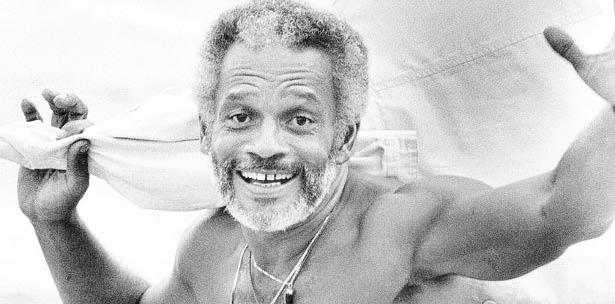Het is ‘Wist je dat?’ –woensdag!
(Geschreven door: Roberto Gutierrez)
We willen graag met jullie allerlei info en weetjes delen over salsa/latin cultuur: de muziek, de dans, de artiesten en heel belangrijk de geschiedenis. Voor sommigen zullen bepaalde feitjes al bekend zijn en voor anderen totaal niet. Het gaat erom dat iedereen iets meekrijgt van deze mooie cultuur.
Vandaag hebben we het over de Cubaanse muziek en dans Danzón .

Wist je dat:
- Danzón in Cuba is ontstaan in 1879. De originele structuur is door Miguel Failde geschreven. Om een idee te krijgen hoe zijn eerste Danzón nummer klonk, bekijk de video hieronder.
- De Danzón Europese Roots heeft. De haitiaanse immigranten namen hun populaire Europese dansmuziek genaamd ‘Contredanse’ mee naar Cuba.Alhoewel Haiti een franse kolonie was, Contredanse is een verbastering van het engelse ‘Country Dance’. Country Dances waren britse ‘Social dances’ die door koppels werden gedanst. Sommigen kwamen voort uit militaire tradities. Dat is in de Danzón muziek zelfs nog terug te horen
- De Contradanse, in cuba al snel Contradanza en later Danza werd genoemd. Nadat de muziek evolueerde ontstond de naam ‘Danzón’.
- Danzón als dans als schandalig werd gezien. Door het langzame ritme dansten de koppels dicht tegen elkaar aan en dit vond men obsceen.
Klik hier om te zien hoe tradionele Cubaanse Danzón gedanst wordt.
- Toen de dans populair werd en door alle bevolkingsgroepen werd gedanst, werd Danzón zelfs afgekeurd vanwege raciale kwesties. Immers verschillende rassen konden zich nu mengen in de dans.
- Van oorsprong heeft de Danzón muziek een klassieke feeling. Later in 1910 werd door Jose Urfe een nieuwe ritmisch element vanuit de son toegevoegd.
- Zo onstond de huidige format van Cubaanse Danzón, waarbij je een klassiek gedeelte en een meer ritmisch gedeelte kunt onderscheiden.
- Vanuit Danzón onstonden later de mambo en de chachacha. Danzón kreeg meerdere benamingen zoals Danzón-mambo en Danzón-cha. De bekende contrabassist Israel ‘Cachao’ Lopez, een van de uitvinders van de Mambo, noemde de Danzón-mambo ook wel ‘Ritmo Nuevo’ (nieuw ritme).
Klik hier om te horen of je kenmerken van mambo of chachacha terughoren.
- Danzón en mambo konden goed naast elkaar blijven bestaan omdat de mambo voornamelijk werd gespeeld door amerikaanse big bands (Machito, Tito Puente, Tito Rodriguez).
- Helaas werd de Danzón steeds minder populair naarmate haar ‘dochter’ de chachacha bekender werd.
We hopen dat je deze weetjes interessant vond. Wil je meer weten over Danzón? Voel je vrij om lekker op onderzoek uit te gaan op internet. Je kunt veel over deze muziek en dans terug vinden!
It’s ‘Did you know?‘ – Wednesday!
(Written by: Roberto Gutierrez)
We would like to share with you lots of information about our salsa/latin culture, about the music, about the beautiful dance, the amazing artists and the rich history and traditions. For some of you the facts that we share might already be known, for others it might be new information.
The topic of this weeks blog is the Cuban music and dance ‘Danzón’.

Did you know:
- Danzón was originated in 1879. Miguel Failde wrote the original structure of this cuban music. Click hear to listen to his first Danzón song.
- Danzón has European roots. The Haitian immigrants that came to Cuba, brought their European dance music ‘Contredanse’.
- Although Haiti was a french colony, Contredanse was derived from the british ‘Country Dance’.
- Country Dances were social dances that were danced in couple formations. Some of them had military origins. This still can be heard in the Danzón rhythm.
- Danzón, as a dance, was seen as scandalous. Because of the slower rhythm the couples danced close to each other and people found that obscene.
Click here to see how traditional Cuban Danzón is danced.
- When Danzón became popular all classes of society started to dance to it. That’s when racial issues started because races could easily be mixed in the dance.
- Originally Danzón has a classical feeling to it. In 1910 Jose Urfé introduced a new rhythmical segment from Son into Danzón. Since then you can notice two parts, a classical part and a more rhythmical part.
- From Danzón came Mambo and Chachacha. Different names like Danzón-mambo or Danzón-cha were created. Israel ‘Cachao’ Lopez, was one of the orignators of the Mambo and called the Danzón-mambo ‘Ritmo Nuevo’ (new rhythm). Click here to listen of you can trace back some recognizable elements of mambo or chachacha.
- Danzón and Mambo could easily exist next to each other. Because Mambo was picked up by american big bands (Machito, Tito Puente, Tito Rodriguez)
- Unfortunately Danzón lost popularity as it’s ‘daughter ‘ Chachacha became more popular in the 1950’s.
We hope you liked these facts and if you want to know more about Danzón, please feel free to search more information about this music and dance on the internet.




